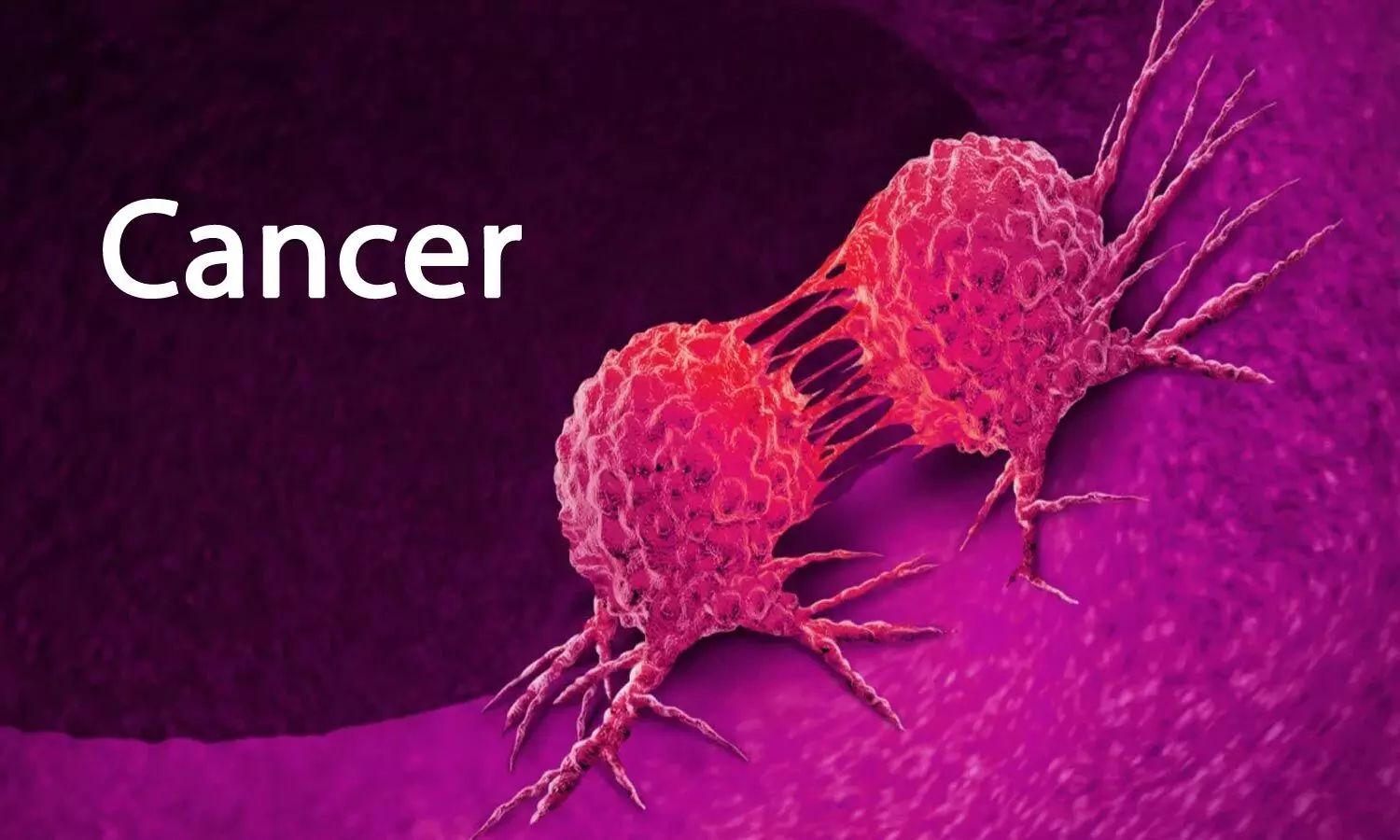
Cancer is a large group of diseases that can start in almost any organ or tissue of the body when abnormal cells grow uncontrollably, go beyond their usual boundaries to invade adjoining parts of the body and/or spread to other organs. Cancer is one of the emerging major public health problems that affect millions of people around the world, including India. A neoplasm and malignant tumour are other common names for cancer. A lavender ribbon is usually a sign of support for those living with all types of cancer. Cancer is the second leading cause of death globally, accounting for an estimated 9.6 million (96 lakh) deaths. In recent years, the incidence of cancer has been steadily increasing in India. ICMR “National Cancer Registry Programme” data shows approx. 3.65 million (36.5 Lakh) people are affected with cancer in india, 1.5 million (15 Lakh) new cases are diagnosed each year and approximately 0.8 million (80,000) deaths are reported due to cancer. The six common highly curable childhood cancers (i.e., with 5 year overall survival) viz. Acute lymphoblastic leukaemia (86%), Burkitt lymphoma (90%), Hodgkin lymphoma (95%), Retinoblastoma (96%), Wilms tumour (80%) and Low-grade glioma (>85%), together these represent 50-60% of all childhood cancers and are the initial focus of Global Initiative for Childhood Cancer.
Cancer is a leading cause of death for children and adolescents worldwide. According to WHO, it is estimated that approximately 4,00,000 (4 Lakh) children (0-19 years) are diagnosed with cancer annually across the globe. Most of these children live in low – and middle – income countries (LMICs) where treatment is not available/affordable leading to wide disparity in survival of childhood cancers (30% in LMICs vs 80% in HICs). As per the report of National Cancer Registry Program (2020), the incidence of cancer in India is approx. 15 lakh (9% of the total deaths in India). Among males, cancers of lung, mouth, oesophagus and stomach are the leading sites across most of the registries. Among females, breast cancer is the commonest cancer followed by cervical cancer.
A carcinogen is a substance, organism, or agent that can cause cancer. Carcinogens can be found in the environment, in food, and in the workplace. Ultraviolet rays tobacco, automobile exhaust fumes, arsenic, lead, cadmium, uranium, some pesticides alcohol and metallic pollutants such as manganese are considered as potent carcinogens. Tobacco consumption in India either as chewing tobacco or smoking tobacco account for 50% of all cancers in men in addition to that dietary practices and reproductive and sexual practices that account for 20-30% of cancers. More than 4 million (40 Lakh) people die prematurely every year in the world from illnesses attributable to household air pollution from cooking with solid fuels, 6% of these deaths are from lung cancer globally. Indoor air pollution from coal fires doubles the risk of lung cancer, particularly among non-smoking women. Exposure to smoke from industry and vehicles, and pesticides and insecticide sprays are the major contributors to increasing the cancer burden in India.
The most prevalent behavioural risk factor is inadequate intake of fruits and/or vegetables. At least 400 grams should be taken by an adult person every day to reduce the risk of cardiovascular diseases, stroke and cancers. Most NCDs including cancer are strongly associated and causally linked with major behaviour risk factors e.g. Poor dietary habits, Insufficient physical activity, Alcohol use, Tobacco use (smoking & smokeless), Air Pollution. However, the other important factors due to which an individual might develop NCD are stress, hereditary factors. In Fig 2 the behavioural risk factors and their outcomes are depicted.
As per National NCD Monitoring Survey (NNMS), 2017-18, the prevalence of risk factors associated with NCDs amongst adults (18-69 years) such as current tobacco use, current alcohol use, inadequate intake of fruits and/or vegetables intake and insufficient physical activity are 32.8%, 15.9%, 98.4% and 41.3% respectively in India.
Cancer needs a network of specialized infrastructures and human resources for its prevention and care. The Government of India has recently launched the Ayushman Bharat Yojana (ABY), which has one of the two components focused on strengthening primary healthcare, through 1.65 lakh Health and Wellness Centres (HWCs) and the second component of Pradhan Mantri Jan Arogya Yojana or PMJAY to provide secondary and tertiary levels of treatment services. These HWCs have focused on community-based screening for some common cancers, which could be a good opportunity to integrate cancer prevention and control into primary healthcare services in the country. Cancer control in India has made considerable progress in the last four decades since the Indian Council of Medical Research launched the National Cancer Registry (NCR) Programme in 1982.
The shift from treatment to broader prevention and control was noted when the Union Government of India launched the National Programme for Prevention and Control of Cancer, Diabetes, Cardiovascular Diseases, and Stroke (NPCDCS) in 2010, now renamed as National Programme for Prevention and Control of Non-Communicable Diseases (NP-NCD) which proposed the preventive, promotive, curative, and rehabilitative care to cancer patients at all levels of the health system. Population-Based Screening (PBS) for adults above the age of 30 years has been established to screen for 3 cancers i.e. cervical, oral, and breast cancer and 2 NCDs (Diabetes Mellitus and Hypertension) every 5 years by Accredited Social Health Activists (ASHAs), Auxiliary Nurse-Midwives (ANMs) and Community Health Officer (CHOs). Cervical cancer screening has to be supported and supervised by a trained Staff Nurse or Medical officer. The program envisages control of tobacco-related cancers; early diagnosis and treatment of oral, breast & cervical cancer; and distribution of therapy services, pain relief, and palliative care through augmentation of health infrastructure.
The cancer burden continues to grow globally, exerting tremendous physical, emotional and financial strain on individuals, families, communities and health systems. GOI has already recognized the value of multidisciplinary management and the importance of surgery, radiotherapy, chemotherapy, palliative care and other approaches in the treatment of cancer and to establish tertiary cancer care centres at the peripheral levels. Some of the cancers are truly preventable tumours (such as those of lung, cervix, colon, rectum, skin and liver): to avoid and reduce exposure to risk factors (such as tobacco use, unhealthy diets, harmful use of alcohol, sedentariness, excess exposure to sunlight, communicable agents, including hepatitis B virus and liver fluke, and occupational exposures), thus limiting cancer incidence. The States/UTs have been strengthened to assess periodically the performance of cancer prevention/control programme and policy changes accordingly allowing them to improve the effectiveness and efficiency of their programmes.
| Screening | Identification of early warning signals of common childhood cancer by community screening and parent education. Red Flag signs of common cancers are the following:
|
||||||||||||||||||||||||||
The cancers can have many warning signs such as unexplained weight loss, fatigue, fever, unexplained pain at any site, abnormal skin changes and sores that is not healing. A person should consult a doctor if he experiences the symptoms for a long time. In Fig 3, the prominent warning signs and symptoms with possible cancers is depicted.
Non-communicable diseases (NCDs), such as heart disease, diabetes, cancer, and chronic respiratory diseases, can be prevented by adopting a healthy lifestyle and making informed choices. Here are some key strategies:
- Healthy Diet:
- Eat a balanced diet rich in fruits, vegetables, whole grains, and lean proteins. An adult person should take 5 standard measures (5*80 gms = 400 gms)of fruits and vegetables per day
- Limit sugar, salt, and saturated fat intake.
- Regular Physical Activity:
- Engage in at least 150 minutes of moderate aerobic activity (e.g. 30 minutes brisk walking per day, 5 days in a week).
- Avoid Tobacco and Alcohol:
- Quit smoking and avoid exposure to second-hand smoke.
- Limit alcohol consumption.
- Regular Health Check-ups:
- Monitor blood pressure, blood sugar, and cholesterol levels regularly.
- Get screened for cancer and other NCDs based on age and risk factors.
- Mental Health Management:
- Manage stress through relaxation techniques like meditation, yoga, or deep breathing.
- Seek support if experiencing anxiety or depression.
- Vaccinations and Hygiene:
- Stay updated with vaccines that reduce cancer risks (e.g., HPV to prevent cervical cancer and hepatitis B vaccines to prevent hepatocellular carcinoma).
- Maintain good hygiene to prevent infections that could lead to chronic diseases.
- Community Awareness and Support:
- Participate in health awareness programs.
Engage in community activities promoting a healthy lifestyle. The need for a community component in cancer prevention was felt when as it was realized that the key challenges in early diagnosis and treatment of cancer are related to the patients receiving wrong information, having poor knowledge, poor faith in public health services, and a weak cancer health infrastructure. One of the commonly missing parts of health program implementation in India is missing community or people’s participation, which essentially starts with community mobilization and awareness generation among common citizens. The method of early detection of cancers in symptomatic individuals is a more practical approach. However, for its successful implementation, there is a need to generate awareness among the general population and train healthcare professionals in diagnosing and referrals of cancer suspects at an earlier stage to reduce secondary complications due to cancer. Appropriate changes in lifestyle and healthy lifestyle and dietary practices can reduce the mortality and morbidity from Cancer.
Let’s join hands to protect ourselves and our loved ones from Cancer for making India a healthy & wealthy nation!
The writer is a Senior Public Health Specialist and Formerly DDG (NCD).





